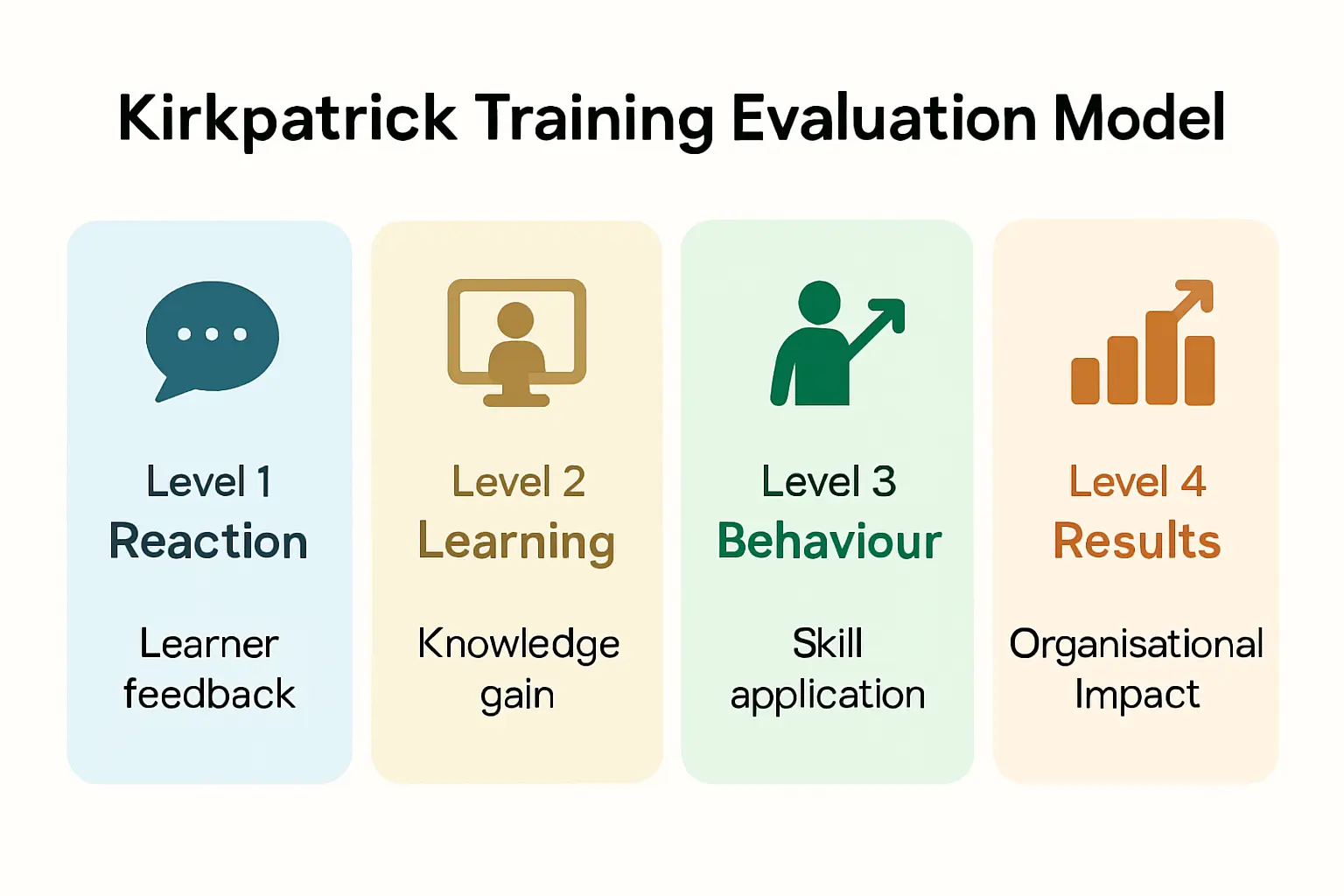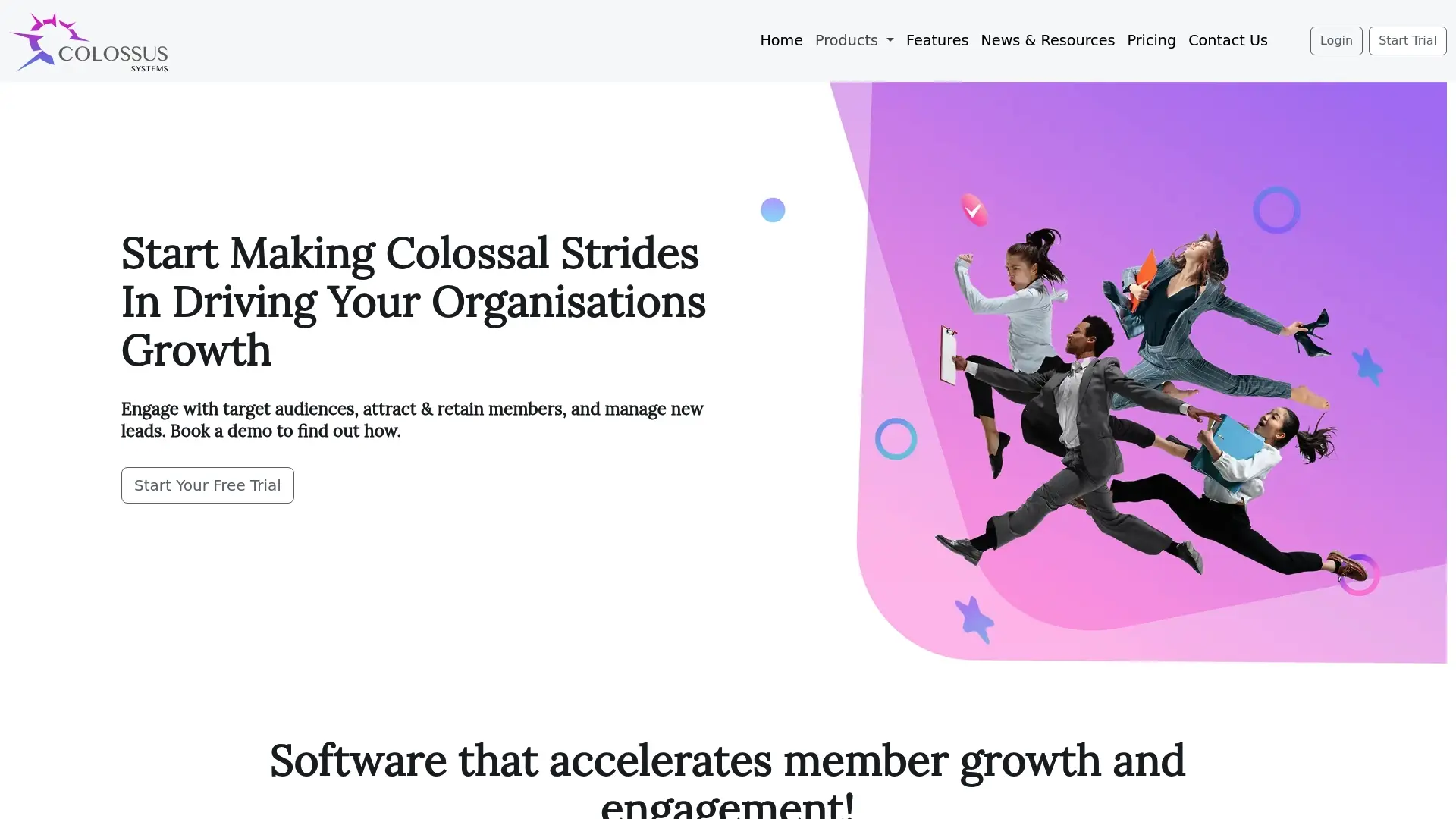Virtual Training Best Practices for Membership Groups 2025

Virtual training has quickly become the foundation for membership groups seeking to upskill and connect their members. Surprisingly, while most expect dull video calls or uninspired e-learning slides, today’s strategies feature bold interactive methods and constant personalisation. In fact, research shows learning broken into 5-10 minute modules can massively boost retention rates, reshaping how members develop skills and stay engaged.
Table of Contents
- Building An Effective Virtual Training Strategy
- Engaging Remote Learners With Interactive Techniques
- Evaluating And Improving Virtual Training Programmes
- Tailoring Content For Membership Organisations And Associations
Quick Summary
| Takeaway | Explanation |
|---|---|
| Develop a robust virtual training strategy | Focus on enhancing engagement, knowledge retention, and interactivity in online learning experiences. |
| Utilise interactive techniques | Implement methods like breakout rooms and polling to foster collaboration and active participation among learners. |
| Prioritise facilitator preparation | Ensure facilitators are well-trained in technology and engagement strategies to deliver effective virtual training. |
| Adopt a data-driven improvement approach | Continuously gather feedback and measure performance to refine training programmes and enhance outcomes. |
| Create personalised learning pathways | Tailor content to individual needs and roles to optimise the learning experience for members. |
Building an Effective Virtual Training Strategy
Developing a robust virtual training strategy requires a comprehensive approach that addresses the unique challenges of online learning environments. Membership groups must create intentional frameworks that maximise engagement, knowledge retention, and participant interaction.
Strategic Design and Learner Engagement
Successful virtual training begins with thoughtful instructional design that goes beyond simply transferring classroom content online. Explore our training optimisation strategies to understand how to craft compelling digital learning experiences.
According to Gartner’s 2023 research, organisations must focus on three critical virtual training approaches: synchronous, asynchronous, and blended learning models. These approaches allow for flexible learning pathways that accommodate different member preferences and learning styles. The key is creating a dynamic curriculum that maintains participant engagement through interactive elements and varied content delivery methods.
To help clarify the differences between various virtual training approaches, the following table compares the three main learning models recommended for membership groups.
| Learning Model | Description | Flexibility |
|---|---|---|
| Synchronous | Real-time, live sessions with facilitator and learners | Moderate |
| Asynchronous | Self-paced modules accessible anytime | High |
| Blended | Combination of live and self-paced learning elements | Very High |
Professional membership groups should prioritise several core strategic elements:
- Technology Infrastructure: Select robust platforms supporting seamless multimedia integration, interactive features, and reliable performance across multiple devices.
- Content Personalisation: Design learning modules that can be customised to individual skill levels and professional development needs.
- Interaction Mechanisms: Implement tools enabling real-time collaboration, peer discussion, and immediate feedback.
Facilitator Preparation and Technical Readiness
The success of virtual training heavily depends on facilitator expertise and technical proficiency. The Learning Guild emphasises the importance of comprehensive producer and facilitator guides to ensure consistent, high-quality training experiences.
Effective facilitator preparation involves:
- Comprehensive technical training on virtual platform capabilities
- Rehearsal sessions to refine presentation and interaction techniques
- Development of engagement strategies specific to online learning environments
Continuous Improvement and Measurement
eLearning Industry recommends implementing robust measurement mechanisms to track training effectiveness. This includes gathering participant feedback, analysing learning outcomes, and continuously adapting training strategies.
Key performance metrics should encompass:
- Participant engagement rates
- Knowledge retention assessments
- Skill application in professional contexts
- Participant satisfaction surveys
By adopting a holistic, data-driven approach to virtual training strategy, membership groups can create transformative learning experiences that support professional development and organisational growth.
Engaging Remote Learners with Interactive Techniques
Interactive techniques are crucial for maintaining participant attention and motivation in virtual training environments. Membership groups must develop innovative strategies that transform passive learning into dynamic, participatory experiences.
Designing Collaborative Learning Experiences
Explore our advanced learning engagement tools to understand how technology can enhance interactive learning.
According to research published in the National Center for Biotechnology Information, interactive approaches make learning processes more effective and exciting, enabling spontaneous and non-intrusive performance assessments. By incorporating collaborative techniques, trainers can create immersive environments that encourage active participation.
Effective interactive strategies include:
- Virtual Breakout Rooms: Small group discussions that promote peer learning and knowledge sharing
- Real-time Polling: Instant feedback mechanisms to gauge understanding and maintain engagement
- Collaborative Digital Whiteboards: Shared spaces for brainstorming and visual problem-solving
The following table summarises key interactive techniques that enhance engagement in virtual training programmes, along with their core benefits.
| Interactive Technique | Main Benefit |
|---|---|
| Virtual Breakout Rooms | Promotes peer learning and sharing |
| Real-time Polling | Maintains engagement and checks understanding |
| Collaborative Digital Whiteboards | Enables brainstorming and visual collaboration |
| Gamification Elements | Increases motivation and active participation |
| Post-session Reflection Surveys | Gathers feedback and supports improvement |
Gamification and Experiential Learning
University of Florida research emphasises creating learner-centered training that prevents critical nuances from being lost in virtual settings. Gamification elements can transform traditional learning modules into compelling, interactive experiences.
Key gamification techniques involve:
- Points and achievement systems
- Interactive scenario-based learning
- Competitive challenges with meaningful rewards
- Progress tracking and skill development visualisations
Continuous Engagement and Feedback Mechanisms
Research from the National Institutes of Health indicates that good learning environments promote engagement through strategic collaborations. Implementing robust feedback loops and adaptive learning pathways ensures participants remain motivated and connected.
Recommended engagement strategies include:
- Post-session reflection surveys
- Peer mentoring programmes
- Regular skill assessment checkpoints
- Personalised learning recommendations
By integrating these interactive techniques, membership groups can create virtual training experiences that are not just informative, but genuinely transformative and engaging.
Evaluating and Improving Virtual Training Programmes
Continuous evaluation and improvement are fundamental to creating high-quality virtual training programmes that deliver meaningful learning outcomes for membership groups. Organisations must develop robust assessment frameworks that go beyond traditional metrics to capture the true impact of their training initiatives.
Comprehensive Performance Assessment
Discover our advanced training evaluation tools to enhance your programme assessment strategies.
According to OSHA’s best practices, the Kirkpatrick Training Evaluation Model provides a comprehensive approach to measuring training effectiveness. This model encompasses four critical levels of assessment:

- Reaction: Participants’ immediate feedback and satisfaction with the training experience
- Learning: Measurement of knowledge and skill acquisition
- Behaviour: Assessment of how learning translates into practical workplace application
- Results: Evaluation of broader organisational impact and performance improvements
Feedback and Continuous Improvement
RTI International emphasises the importance of providing timely and specific feedback in virtual learning environments. Effective feedback mechanisms should include:
- Structured self-assessment tools
- Peer feedback platforms
- Hyperdocs for reflective learning
- One-on-one developmental check-ins
By implementing these strategies, membership groups can create a dynamic feedback loop that continuously refines training content and delivery methods.
Evidence-Based Training Enhancement
Research published in BMC Medical Education underscores the critical importance of aligning virtual education with specific organisational needs. This involves:
- Developing engaging, context-specific content
- Implementing active learning techniques
- Creating robust virtual assessment methods
- Regularly updating training materials based on performance data
Key metrics for evaluating virtual training programmes should include:
- Participant engagement rates
- Knowledge retention percentages
- Skill application effectiveness
- Long-term performance improvements
- Return on training investment
Successful virtual training programmes are not static documents but living systems that adapt and evolve. By embracing a data-driven approach to evaluation and continuous improvement, membership groups can ensure their training initiatives remain relevant, effective, and aligned with organisational goals.
Tailoring Content for Membership Organisations and Associations
Creating targeted, high-quality virtual training content requires a nuanced approach that addresses the specific needs and professional development goals of membership organisations and associations. Successful content strategies go beyond generic training modules to deliver personalised, impactful learning experiences.
Personalised Learning Pathways
Explore our membership content customisation tools to understand how to create tailored learning experiences.
According to research by Training Magazine, user experience (UX) is critical in online learning. Course content must prioritise member engagement and excitement, ensuring that training materials are not just informative but also genuinely compelling.
Key strategies for personalisation include:
- Skill Level Assessment: Implementing diagnostic tools to determine individual member competencies
- Adaptive Learning Paths: Dynamically adjusting content complexity based on member performance
- Professional Role Segmentation: Creating specialised modules for different professional contexts
Modular and Microlearning Approaches
Research by Ebbinghaus et al. demonstrates that breaking content into short 5-10 minute modules significantly improves knowledge retention. By adopting microlearning techniques, membership organisations can create more digestible and effective training experiences.
Effective microlearning design involves:
- Concise, focused learning units
- Multimedia content integration
- Spaced repetition techniques
- Mobile-friendly design
- Quick assessment checkpoints
Strategic Content Development
LMS Portals research emphasises the importance of carefully planned online training programmes that deliver genuine value to members.
Critical considerations for content development include:
- Alignment with professional certification requirements
- Integration of industry-specific case studies
- Regular content updates reflecting emerging trends
- Opportunities for practical skill application
- Networking and collaborative learning elements
By implementing a holistic approach to content design, membership organisations can create virtual training programmes that not only educate but also inspire and support professional growth. The key lies in understanding member needs, leveraging technology, and maintaining a flexible, learner-centric approach to educational content.

Frequently Asked Questions
What are effective strategies for virtual training engagement?
To engage learners in virtual training, employ interactive techniques like breakout rooms for small group discussions, real-time polling for feedback, and collaborative digital whiteboards. These methods help to create an immersive environment that promotes active participation.
How can facilitators prepare for virtual training sessions?
Facilitators should undergo comprehensive training on the virtual platform’s capabilities, conduct rehearsal sessions to refine their delivery techniques, and develop specific engagement strategies for online environments to ensure effective training delivery.
What metrics should be used to evaluate the effectiveness of virtual training?
Key metrics for assessing virtual training effectiveness include participant engagement rates, knowledge retention assessments, skill application in real-world contexts, and participant satisfaction surveys. These metrics provide insights into the overall impact of the training.
How can content be personalised for members in virtual training?
Content can be personalised by implementing skill level assessments, creating adaptive learning paths based on member performance, and offering specialised training modules tailored to different professional roles, ensuring a more relevant learning experience.
Ready to Revolutionise Your Membership Group’s Virtual Training?
If you want to go beyond basic webinars and truly engage your members with interactive, personalised learning, it is time to reimagine your training strategy. Many membership organisations struggle with delivering dynamic virtual programmes, boosting engagement, and gaining actionable feedback. Colossus Systems directly addresses these pain points by enabling seamless content personalisation, full integration of interactive tools, and advanced analytics to measure what truly matters.

Do not settle for outdated or fragmented platforms when your members expect more. Discover how Colossus Systems unifies membership management, event planning, and customised online learning so you can create real impact in every session. Take the next step towards more engaging training today by visiting our main site to see how your association can transform its virtual learning experiences.